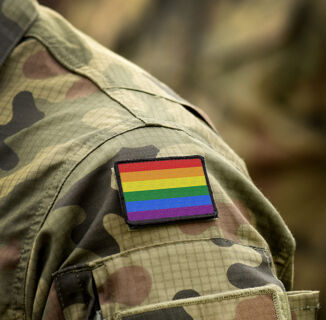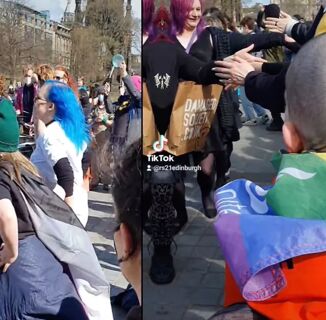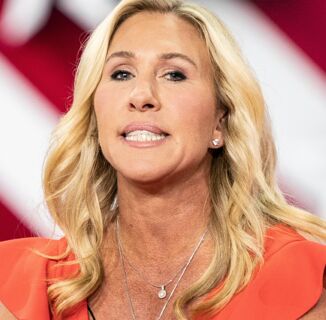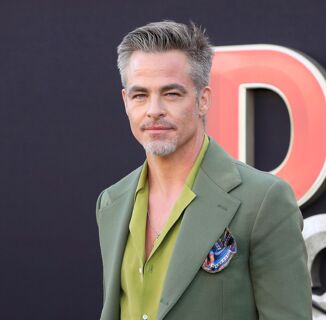The world of science can be tricky for queer people.
Forty percent of LGBTQ+ science, technology, engineering, and mathematics (STEM) workers are not out to their colleagues as LGBTQ physicists express dismay over a harsh, heterosexist climate that suppresses identity. While one would hope that universities would offer a safe haven for queer STEM hopefuls, queer undergraduates are less likely than their heterosexual peers to stick to a STEM program. And their out, queer professors? They face similar struggles as 70 percent felt uncomfortable in their departments.
Like many industries – from tech to construction, nonprofits to entertainment – STEM has a major problem with acceptance, suppressing queer voices while disabling individuals from living out in the open. “It’s a pretty lonely road for a queer person,” Dr. Lauren Esposito explains to INTO. Esposito identifies as queer and is the Curator of Arachnology at the California Academy of Sciences. She’s experienced this lack of support firsthand. “There’s not many other queer people who are really visible…It doesn’t really feel okay in most professional science settings to call out that you are queer.”
For scientists like Esposito, the problem of being queer in STEM is rooted in a lack of visibility within hyper-straight environments. In her opinion, STEM culture is particularly icy. Even in her position, even in a city like San Francisco, she has experienced a chill. “I haven’t seen any people senior to me who are queer – and openly so,” Esposito says. “That they’re not really open about it – in a public sphere, at least in a professional setting – is telling of the way that the scientific culture makes one feel.”
With such a clear problem, few solutions were out in the open. Inspired by the success of groups like 500 Women Scientists, Esposito took matters into her own hands and recently launched 500 Queer Scientists, a multi-platform effort to connect and highlight the work and experiences of LGBTQ+ persons working in STEM in the hopes of curbing isolation and prejudice. Esposito began developing the project in April 2018 and created the website with Sean Edgerton, a graduate student and scientific illustrator. She also tapped into social media colleagues Laurel Allen, Kristina Fong and Jayme Brown during non-working hours. The site launched with the stories of 50 scientists (along with Twitter and Instagram accounts) and, in a week, accrued a network of four hundred queer STEM figures.
“There’s been a huge outpouring from the community that makes me feel like I am not the only one feeling this way,” Esposito says. Esposito has heard from organizations and universities along with openly LGBTQ scientists hoping to participate. She’s also heard from scientists who cannot afford to be out, who have privately messaged to note how empowering 500 Queer Scientists has already been for them. The overwhelming feeling is that the community has finally been able to take a big breath of fresh air, to stick their head above the sometimes dark STEM cloud to see each other – and know that a bright future is out there.
“Among scientists, there’s this history of queer people being ostracized from scientific communities and being persecuted in society or the legal system,” Esposito says, pointing to the example of acclaimed computer scientist Alan Turing being outed and ostracized. “The thing that has been so amazing about this is that everybody…is jumping on [social media] and saying, ‘Let’s celebrate everyone’s accomplishments in this field because we have made a really substantial contribution – and we’re going to continue to do so.’”
Esposito’s hope is to maintain the community’s drive to push for more representation in STEM while widening the reach. 500 Queer Scientists is already international leaning, featuring stories from India, South Africa, Mexico, Brazil, and beyond, but Esposito hopes the work will permeate cities, states, and countries where there are little protections for being out, from the 28 US states where you can be fired for being gay to the 72 countries where homosexuality is still criminalized. “Those are the places that will benefit most from visibility,” Esposito says. “Even though they can’t necessarily speak up.”
500 Queer Scientists will continue to expand and adapt, to include more stories in more languages. Esposito has her ear constantly toward the community and, with a soon-to-launch page, she’s open to taking suggestions for how they can support the community beyond conversations already being had with scientific societies to increase visibility on a broader scale. “The community is going to let us know what is high on that list,” she says. “I want this to be a platform for my community.”
For more on 500 Queer Scientists, be sure to check out their Twitter and Instagram accounts. They will also be celebrating their launch with a panel at California Academy of Sciences’ Pride NightLife in San Francisco on June 21.
Help make sure LGBTQ+ stories are being told...
We can't rely on mainstream media to tell our stories. That's why we don't lock our articles behind a paywall. Will you support our mission with a contribution today?
Cancel anytime · Proudly LGBTQ+ owned and operated
Read More in Impact
The Latest on INTO
Subscribe to get a twice-weekly dose of queer news, updates, and insights from the INTO team.
in Your Inbox















